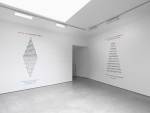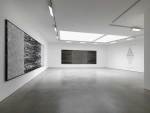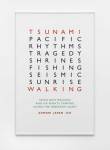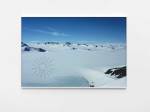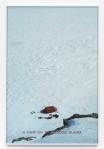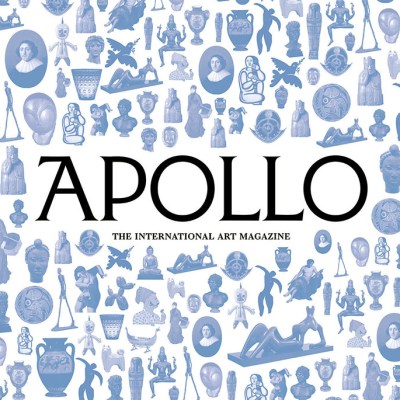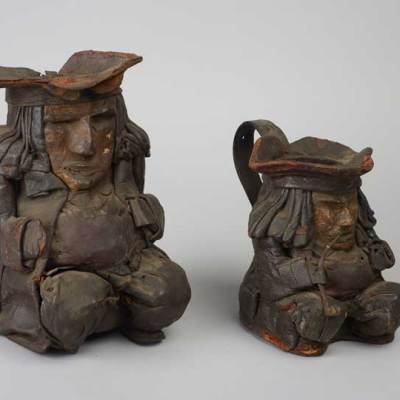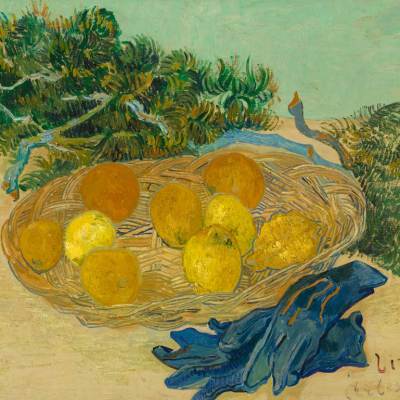Richard Long continues to tread his own well-worn path. In his new exhibition at London’s Lisson Gallery, his walks across southern England, Switzerland’s Engadine valley and the glaciers of Antarctica are represented in the forms that will be familiar to anyone who has followed his 50-year career: the stone sculpture, the mud-daubed canvases, the photographs of subtly altered landscapes, the wall-length text works. That’s not meant to sound negative; these works may be familiar, but for the large part these are fresh and affecting depictions of an artist navigating the natural world.
Take the three text works, spread across the walls of one room. These are always a pleasure to see, blocks of elegant Gill Sans font arranged as carefully as cairn-stones. Playful like concrete poems, they reconstruct Long’s journeys by naming their encounters and impressions, a slippery blend of the physical (GRANITE, SHEPHERDS) and the metaphysical (SUPERSYMMETRY, DECISIONS).
‘Walking,’ writes Rebecca Solnit in Wanderlust, her definitive history of the subject, ‘is how the body measures itself against the earth’ – and measurement is everywhere in Long’s texts. They carry exhausting captions like ‘A MOUNTAIN WALK OF SIXTEEN DAYS’ or ‘A WALK OF 240 MILES IN EIGHT DAYS’. This latter trek, from the Delabole Quarry in Cornwall to the Uffington White Horse in Oxfordshire, is further portioned up into geological time, told through the sequence of rock types seen en route: ‘SLATE GRANITE SANDSTONE LIMESTONE CHALK’.
Installation view: Richard Long at Lisson Gallery, London (23 May–12 July) Courtesy the artist and Lisson Gallery

These texts share a room with two vast canvases covered in Cornish clay and Avon mud. There’s something recognisably Pollock-like about some of these spatters, but it’s difficult to imagine Long as the hardy action-hero painter. Viewing Four Ways, for example, a giant slate cross that dominates an entire floor, we hardly think of the artist (or even his assistants) labouring and sweating to ease these blocks of Cornish stone into position. If we think of him at all, it is 10 steps back, sizing it up, already removed from the work.
This sober distance, however, gets lost upstairs, where photographs are displayed documenting Long’s 2012 trip to Antarctica. In one, Antarctica Footprints, words are arranged in an uncharacteristically clumsy circle over a snow-coated landscape; in another, A Camp on the Driscoll Glacier, Long’s red tent is shockingly included in the shot. As much as Long has resisted the legacy of Rousseau and the label of romanticism – preferring instead to align his practice with conceptualism, minimalism, arte povera – there is something uncomfortably romantic about this tent. It’s out of key, like an intervention from Caspar David Friedrich, man pitted against the ‘great outdoors’. It’s a crass sense of sublime, perhaps more suited to a National Geographic coffee table book.
While these photos somewhat lose their footing, the paper works round the corner offer a stunning contrast. These five small pieces, ranging from 1995 to 2006, were created by Long dunking paper in mud from his beloved river Avon and allowing gravity to trace complex paths down the page. The resulting shapes recall densely packed alpine forests, upended root systems, or nerve cells dyed for the microscope; nature seems to be mimicking itself. Above all, these quiet works demonstrate that Long is a stronger artist when understating himself, as a man of unheard footsteps rather than grand gestures.
‘Richard Long’ is at Lisson Gallery, London, until 12 July.

